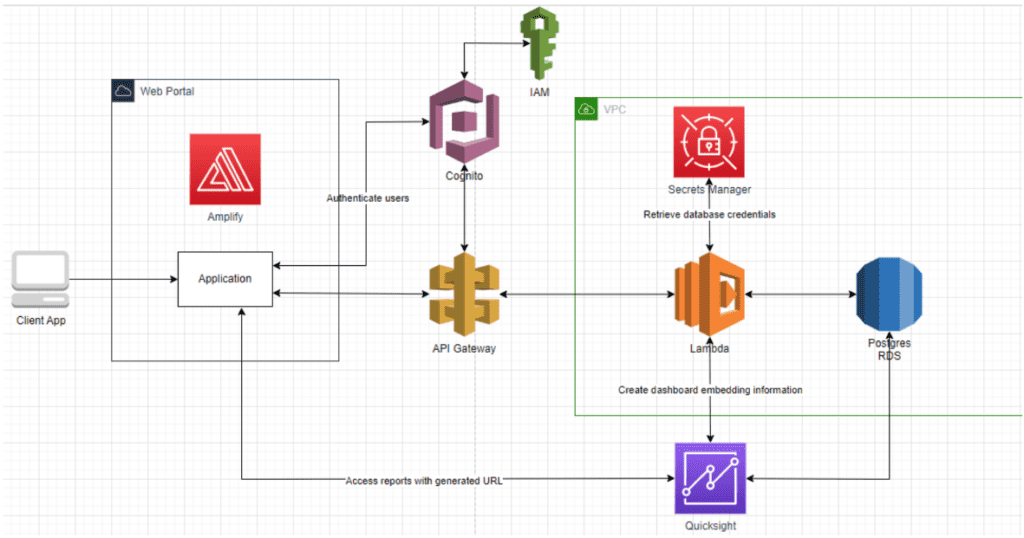Your data speaks volumes in today’s data-driven business landscape – that’s likely why 98% of executives agree it’s essential to increase data analysis (G2) in their organization. It holds immense value, driving decision-making processes and shaping strategic initiatives. However, while executives understand the importance of data literacy, many frontline employees express skepticism about the accuracy and reliability of the data they encounter daily.
Jump to: Checklist – Choosing the Right Data Management Consultant >>>
Despite the widespread recognition of data’s critical role in business success, only a fraction of frontline workers truly trust the data they work with. This disparity highlights the urgent need for organizations to ensure the authenticity and reliability of their data sources. Investing in reliable data management consultants is essential for confidently and accurately steering businesses toward their goals.

By harnessing the power of reliable data, organizations can make informed decisions, drive innovation, and achieve their business objectives seamlessly. Explore our guide for businesses seeking data management consultants to learn more about unleashing the full potential of your data.
Ensure You Understand Your Data Management Needs
Embarking on the journey to optimize your data management begins with a simple yet crucial step: understanding your current practices and identifying areas for improvement.
By assessing your data handling, storage, and analysis methods, you lay the foundation for a more efficient and effective data management strategy.
Get Started by Identifying Your Requirements
Start by conducting a self-assessment of your current data management practices. Evaluate how your organization collects, stores, processes, and analyzes data. Identify any bottlenecks, inefficiencies, or gaps in your existing processes. This introspection will help you gain insight into your current data practices and prepare you to engage in meaningful discussions with industry professionals.
Evaluate Where You’re Starting
As you assess your data management practices, pay close attention to any gaps or opportunities for improvement. Take a ‘snapshot’ of your current organization and ask yourself these questions:
- Are there areas where your organization needs more expertise or resources?
- Are there inefficiencies in your data workflows that could be streamlined for better performance?
- Have you identified Key Performance Indicators (KPIs) that Matter?
By self-assessing these gaps, opportunities, and milestones you can pinpoint areas where intervention is needed and prioritize initiatives for improvement.
Assess Where You Want To Go
Setting clear objectives is also essential for guiding your data management strategy. Define what success looks like for your organization in terms of data management:
- Are you aiming to enhance data security and compliance measures?
- Improve data accuracy and reliability?
- Enhance data visualization and analytics capabilities?
Setting specific, measurable objectives will provide direction and focus as you optimize your data management processes.
READ: 4 Things You Need to Change About Your Data Strategy
Unlock The Full Potential Of Your Data
Remember, understanding and optimizing your data management needs is just the beginning. While self-assessment is valuable, it’s equally important to approach the process with open hands and a willingness to learn. Engage with industry professionals and data management experts who can offer guidance and expertise tailored to your organization’s unique needs. Together, you can collaboratively develop a data management strategy that drives success and unlocks the full potential of your data assets.
Establish Criteria For Your Ideal Data Management Consultant
Selecting the right data management consultant for your organization requires careful consideration of various factors to ensure alignment with your specific needs and objectives. As you consider the right data management advisors for your business, keep in mind these skills that you’ll want to look for in a partner:
Hard Skills
- Expertise and Specialization: Look for analytics consultants with proven proficiency in critical areas of data management, such as data modeling, database design, integration, and analytics. Prioritize candidates with relevant certifications or practical experience aligned with your organization’s requirements.
- Industry-Specific Experience: Evaluate consultants based on their familiarity with industry regulations, data standards, and best practices. For example, healthcare organizations should seek consultants well-versed in HIPAA compliance, while finance-related businesses benefit from expertise in regulatory requirements specific to their sector.
- Data Security Expertise: Data security is paramount. Choose a consultant with a solid background in data protection, encryption technologies, and risk management strategies. Ensure they can address your security concerns effectively and safeguard sensitive information.
Soft Skills
- Communication Skills: Effective communication is critical for translating technical concepts into layperson’s terms and ensuring project requirements are understood by all stakeholders. Seek consultants who excel in articulating complex ideas and fostering open dialogue. Presentation skills are desirable.
- Problem-Solving Abilities: Look for consultants with strong analytical skills and a proactive approach to identifying and addressing data management challenges and opportunities. They should be adept at devising creative solutions and optimizing data processes.
- Adaptability: Prioritize consultants willing to learn and adapt to new tools and practices in the ever-evolving data landscape. Their ability to stay updated ensures your strategies remain relevant and practical.
- Team Compatibility: Assess analytics consultants based on their ability to integrate seamlessly with your existing team. Look for individuals who demonstrate empathy, understanding, and a collaborative mindset to foster a harmonious working environment.
Reputation
- Client Testimonials and References: Seek feedback from previous clients to gauge the consultant’s effectiveness, reliability, and customer experience. Testimonials can also offer insight into their working style and project success.
- Professional Accolades: Consider any awards, certifications, or recognitions received by the consultant, indicating their professional standing and expertise.
- Online Presence and Thought Leadership: Evaluate their online presence, including published articles, blog posts, and participation in industry forums, which reflect their commitment to sharing knowledge and staying updated.
- Ethical Standards: Choose a consultant who upholds professional ethics and data management best practices, ensuring confidentiality and integrity in handling data.
Considering these criteria, you can confidently select a data management consultant who meets your organization’s needs and contributes to its success.
Ask The Right Questions
Now that you know what to look for in your candidate, it’s time to talk with your potential data management experts. Asking the right questions will help you better gauge who is the right fit for you from the qualified candidates.
- What is the cost model? Is it based on time and materials or a fixed fee?
- What is the timeframe for the engagement? And what are the expected deliverables from the management service provider?
- What are the phases (discovery, solution development, testing, etc.) to expect during the engagement? What is the duration of each phase?
- Does the project require ongoing maintenance and support? Who will be responsible for this?
Establish A Selection Process
You’ll likely end up with a few potential consultants who feel like they could work well with your team. The final step before deciding is getting proposals and formal interviews set up with these teams. Here is what we recommend:
- Request for Proposal (RFP) Process: As you get farther along in your selection process, you’ll want to start gathering proposals from your top candidates – and ensuring you have a process for this can streamline efforts. We recommend creating an outline you can share with consultants that details what services you need and invite them to submit a proposal based on those.
- Interviewing Candidates: You’ll also want to schedule formal interviews with your candidates to ask them any outstanding questions and assess their expertise and compatibility. During this interview, you’ll have the opportunity to see how each consultant interacts and their approach to collaboration.
- Evaluating Proposals: Once you receive back the proposals, you’ll need to compare one to the next. But how? We recommend considering key factors like strategy and approach to data management, overall cost, and services scoped for your business.
Make the Final Decision
Once you’ve received proposals from data management advisors and compared costs and strategies, it’s time to decide. While cost is important, conducting a thorough cost vs. value analysis is crucial. Look beyond the price tag and consider the value each consultant will bring to your organization. Evaluate their expertise, industry-specific experience, and ability to address your unique needs and challenges.
Additionally, consider starting with a trial project or evaluation phase to assess the data management experts’ effectiveness before committing to a long-term contract. This initial step allows you to gauge their capabilities firsthand and ensure they fit your organization’s data management needs. By prioritizing value and exploring trial projects, you can make a confident decision that aligns with your organization’s objectives.
The WCI Approach To Helping You Understand Your Data
Leading a client through a data management implementation is not just about orchestrating technology; it’s about guiding them on a transformation journey, ensuring their data becomes a strategic asset, unlocking insights, driving innovation, and ultimately empowering informed decision-making to fuel their success in a data-driven world.
Are you ready to take your data management consulting to the next level with technical expertise that supports your business goals? Connect with our experts to learn more.
Checklist – Choosing the Right Data Management Consultant

Understanding Your Data Management Needs
- Conduct a self-assessment of current data management practices.
- Identify bottlenecks, inefficiencies, or gaps in data collection, storage, processing, and analysis.
- Evaluate areas requiring more expertise or resources.
- Set clear objectives for data management improvement (e.g., enhance data security, improve accuracy, enhance analytics capabilities).
Establishing Criteria for Your Ideal Data Management Consultant
Hard Skills
- Expertise in data modeling, database design, integration, and analytics.
- Industry-specific experience and knowledge of regulations.
- Strong background in data security and protection technologies.
Soft Skills
- Excellent communication skills for translating technical concepts.
- Problem-solving abilities and creative thinking.
- Adaptability to new tools and practices in data management.
- Compatibility with your existing team for a collaborative work environment.
Reputation
- Check for client testimonials and references.
- Look for professional accolades, certifications, or recognitions.
- Evaluate their online presence, thought leadership (articles, blog posts, industry forums).
- Ensure they adhere to professional ethics and best practices in data management.
Asking the Right Questions
- Inquire about the cost model (time/materials vs. fixed fee).
- Ask about the engagement timeframe and deliverables.
- Understand the project phases (discovery, solution development, testing, etc.) and their durations.
- Discuss ongoing maintenance and support responsibilities.
Establishing a Selection Process
- Initiate a Request for Proposal (RFP) process for gathering proposals.
- Schedule formal interviews with potential consultants.
- Evaluate proposals based on strategy, cost, and scoped services.
Making the Final Decision
- Conduct a cost vs. value analysis, prioritizing value each consultant brings.
- Consider starting with a trial project to assess compatibility and effectiveness.
- Make an informed decision based on expertise, experience, and ability to meet your needs.
Taking Your Data Management to the Next Level
- Engage with experts to transform your data into a strategic asset.
- Explore ways to unlock insights, drive innovation, and empower informed decision-making.


